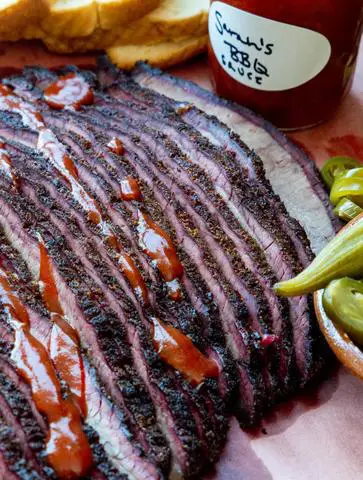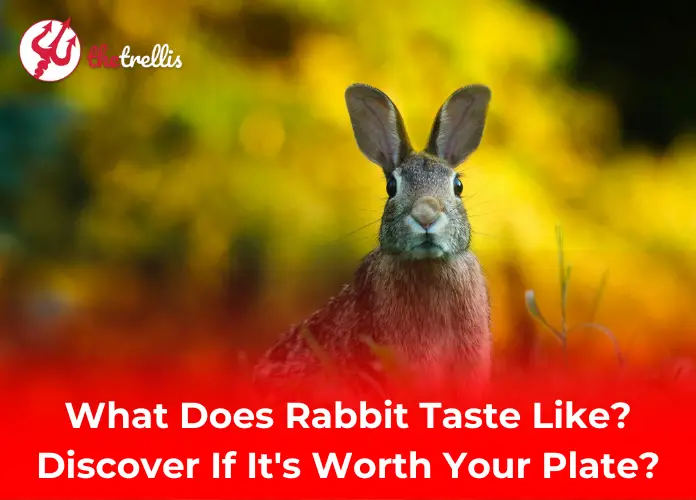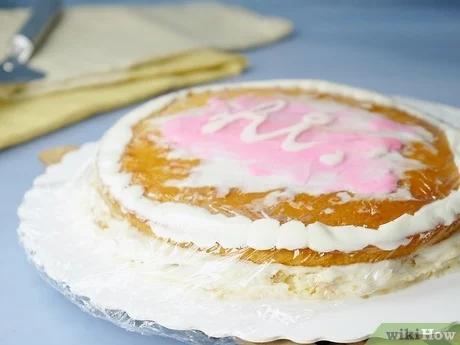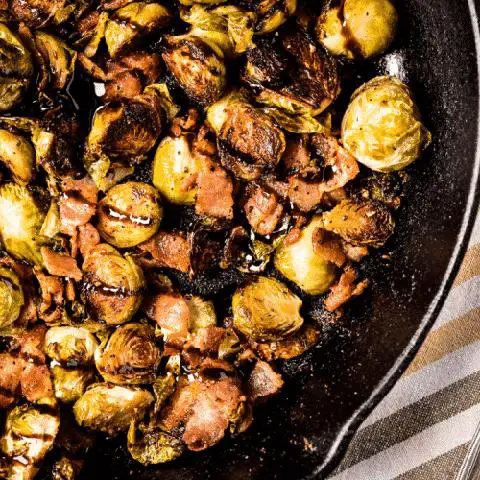
“Smoking Brisket: Unveiling the Perfect Temperature Battle – 250 vs 225. Discover the ultimate secret to mouthwatering brisket as we delve into the heated debate of smoking temperatures, weighing the pros and cons of cooking at 250 degrees Fahrenheit versus the traditional 225 degrees Fahrenheit. Get ready to elevate your BBQ skills and savor every tender bite with this insightful comparison.”
ABOUT SMOKING A BRISKET
Smoking a brisket is a culinary art that requires careful attention to temperature and cooking time. Brisket is a tough cut of meat that is full of flavor, but it needs to be cooked slowly at a low temperature in order to become tender and juicy. The debate between smoking at 225°F or 250°F has long been discussed among pitmasters and home cooks.

Brisket is made up of two muscles, the flat and the point, which are known for their rich connective tissue. To break down this tough tissue and achieve a tender result, the brisket should be cooked at a low temperature of around 225-275 degrees Fahrenheit over a longer period of time. This slow cooking also allows the fat to render slowly, keeping the brisket juicy.
The difference between smoking at 225°F and 250°F is not significant in terms of tenderness or flavor. Both temperatures can produce a soft and flavorful brisket if monitored closely. However, beginners may prefer to start with 225°F as it reduces the risk of overcooking or burning the brisket. On the other hand, smoking at 250°F can speed up the cooking process while still producing excellent results.
The cooking time for a brisket depends on its weight and which part of the brisket you are smoking. Generally, a brisket takes about 1.5 to 2 hours per pound to cook. For example, a packer brisket weighing 12 pounds would take approximately 18 to 24 hours to cook properly. It’s important to check the internal temperature of the meat using a meat thermometer to ensure it reaches 195-205 degrees Fahrenheit before removing it from the smoker.
After cooking, it is crucial to let the brisket rest for a period of time. This allows the meat to reabsorb and redistribute the moisture, resulting in a juicier and more flavorful brisket. Smaller cuts may only need several minutes of resting, while a packer brisket may require 1 to 2 hours.
DIFFERENCE BETWEEN SMOKING A BRISKET AT 225 VS 250
When it comes to smoking a brisket, the temperature at which you cook it can make a difference in the final result. Smoking at 225 degrees Fahrenheit is known as the “low and slow” method, where the brisket is cooked slowly over a longer period of time. This temperature allows for the breakdown of proteins and connective tissues, resulting in a tender and flavorful brisket. On the other hand, smoking at 250 degrees Fahrenheit is slightly higher and can speed up the cooking process without sacrificing tenderness. It also helps with fat rendering and creates a crispy outer layer.
The main difference between smoking at 225 vs 250 is the cooking time. At 225 degrees Fahrenheit, a brisket typically takes about 1.5 to 2 hours per pound to cook properly. So for a packer brisket of 12 pounds, it would take around 18 to 24 hours. On the other hand, smoking at 250 degrees Fahrenheit reduces the cooking time to about 1.5 to 2 hours per pound, so that same packer brisket would take approximately 12 to 18 hours.
Ultimately, the choice between smoking at 225 or 250 degrees Fahrenheit depends on personal preference and available time. Smoking at 225 provides a slower and more traditional approach, while smoking at 250 offers a faster cooking time with potentially crispier results on the outside. Both temperatures can produce a soft and flavorful brisket when monitored closely.
WHICH IS BETTER TEMPERATURE TO SMOKE A BRISKET
The debate over which temperature is better for smoking a brisket, 225°F or 250°F, has been ongoing among pitmasters and home cooks. Both temperatures can result in a soft and flavorful brisket, but it ultimately depends on personal choice and desired outcome.
Cooking a brisket at 225 degrees Fahrenheit is considered the safer option, especially for beginners. This lower temperature reduces the risk of overcooking or burning the brisket. It allows for a longer cooking time, which helps to break down protein and connective tissue in the meat, resulting in a tender and juicy brisket with a smoky flavor.
On the other hand, smoking a brisket at 250 degrees Fahrenheit speeds up the cooking process. It takes less time to cook compared to 225 degrees Fahrenheit while still producing a soft and tender texture. The higher temperature also helps to render fat evenly and create a crispy outer layer on the brisket.
In my personal opinion, smoking a brisket at 250 degrees Fahrenheit is preferable as it creates a crispy exterior while maintaining tenderness on the inside. However, for smaller cuts of brisket or for those who prefer a longer cooking time, 225 degrees Fahrenheit may be the better choice.
Ultimately, it is up to individual preference and desired outcome when deciding between smoking a brisket at 225 or 250 degrees Fahrenheit.
HOW LONG DOES IT TAKE TO SMOKE A BRISKET AT 225 DEGREES FAHRENHEIT
Smoking a brisket at 225 degrees Fahrenheit requires a longer cooking time compared to higher temperatures. Generally, it takes about 1.5 to 2 hours per pound of meat to cook a brisket at this temperature. For example, if you have a packer brisket weighing 12 pounds, it would take approximately 18 to 24 hours to smoke it at 225 degrees Fahrenheit. However, it’s important to note that cooking times can vary depending on factors such as the size and type of brisket, so it’s recommended to use a meat thermometer to check for doneness rather than relying solely on cooking duration.
HOW LONG DOES IT TAKE TO SMOKE A BRISKET AT 250 DEGREES FAHRENHEIT

Smoking a brisket at 250 degrees Fahrenheit will result in a quicker cooking time compared to smoking at 225 degrees Fahrenheit. Generally, a brisket takes about 1.5 to 2 hours to cook per pound. So if you are smoking a packer brisket of 12 pounds at 250 degrees Fahrenheit, it should take you about 12 to 18 hours for it to cook properly.
However, it is important not to solely rely on the cooking duration. It is crucial to check the internal temperature of the meat using a meat thermometer. The internal temperature should reach between 195 to 205 degrees Fahrenheit before taking the brisket out.
Cooking at a higher temperature like 250 degrees Fahrenheit can help break down the meat protein faster and also render the fat perfectly, resulting in an evenly cooked and juicy brisket. But beginners may opt for the safer temperature of 225 degrees Fahrenheit to reduce the risk of overcooking or burning their briskets.
Ultimately, the choice between smoking at 225 or 250 degrees Fahrenheit depends on personal preference and desired outcome. Both temperatures can yield soft, flavorful results if monitored closely.
ALL THE WAYS YOU CAN SMOKE A BRISKET
1. Low and Slow Method: This is the classic method for cooking a brisket. The brisket is cooked at a lower temperature (around 225 to 250 degrees Fahrenheit) for a prolonged period of time, usually 14-18 hours. This slow cooking process helps soften the meat and slowly melt the fat, resulting in an extra tender and juicy brisket.
2. Texas Crutch Method: This method involves wrapping the brisket with aluminum foil during smoking to speed up the cooking process and retain moisture. Wrapping the brisket helps it get through the “barbecue stall,” where the internal temperature stops rising for several hours. By wrapping it, you can prevent moisture from evaporating, making the meat tender and speeding up cooking time.
3. Hot and Fast Method: In this method, the brisket is cooked at a high temperature (around 250 degrees Fahrenheit) for a shorter period of time. The brisket is first smoked for 1-2 hours at 250 degrees Fahrenheit and then seared on a hot grill for 1-2 minutes on each side. This method gives you a good outer crust while keeping the inside tender and juicy.
Each method has its own advantages and slightly different flavors, but all can result in a deliciously smoked brisket. It ultimately depends on personal preference and desired outcome.
THE LOW AND SLOW METHOD
The low and slow method is a classic way of cooking brisket. It involves cooking the brisket at a lower temperature, typically around 225 to 250 degrees Fahrenheit, for a prolonged period of time. This method allows the meat to soften and the fat to melt slowly, resulting in an extra tender and juicy brisket. It is recommended to start early as this process can take about 14-18 hours depending on the weight of the brisket.
The Texas Crutch method is another technique used to smoke a brisket. It involves wrapping the brisket with aluminum foil during smoking to speed up the cooking process and retain moisture. This method is particularly useful for getting through the “barbecue stall,” which occurs when the meat reaches a certain internal temperature and stops rising. By wrapping the brisket in foil or butcher paper, it helps prevent moisture from evaporating and results in a tender and faster-cooked brisket.
The high heat sear method is a different approach to smoking a brisket. In this method, the brisket is slowly cooked at a high temperature, around 250 degrees Fahrenheit, for a short period of time before being seared on a hot grill. This technique allows for a good outer crust while keeping the inside of the brisket tender and juicy. However, it requires careful monitoring to avoid burning or drying out the meat.
Ultimately, whether you choose to smoke your brisket at 225 or 250 degrees Fahrenheit depends on personal preference and desired outcome. Both temperatures can result in flavorful and tender briskets if cooked properly. It is important to consider factors such as cooking time, fuel usage, texture preferences, and risks of undercooked or overcooked meat when making your decision.
TEXAS CRUTCH METHOD
The Texas Crutch method is a technique used to speed up the cooking process and retain moisture in the brisket. It involves wrapping the brisket tightly in aluminum foil or butcher paper during smoking. This method helps to overcome the “barbecue stall,” which occurs when the meat temperature plateaus during cooking. By wrapping the brisket, the liquid is prevented from evaporating, resulting in a more tender and juicy final product.
The Texas Crutch method is particularly helpful for larger cuts of brisket, as it helps to ensure even cooking and prevents drying out of the meat. The wrapped brisket can be placed back into the smoker to continue cooking until it reaches the desired internal temperature.
This method is popular among pitmasters and home cooks alike, as it allows for faster cooking times without compromising on tenderness or flavor. It is important to note that while this method can significantly reduce cooking time, it may result in less pronounced smoky flavors compared to traditional low and slow methods.
THE REVERSE SEAR METHOD
The reverse sear method is a technique that involves smoking the brisket at a low temperature first, and then finishing it off with a high-heat sear. This method allows for more control over the cooking process and helps achieve a perfectly tender and flavorful brisket.
To use the reverse sear method, start by smoking the brisket at around 225 degrees Fahrenheit until it reaches an internal temperature of about 195 to 205 degrees Fahrenheit. This slow cooking process allows the connective tissues in the meat to break down, resulting in a tender and juicy texture.
Once the desired internal temperature is reached, remove the brisket from the smoker and let it rest for about 10 to 15 minutes. During this time, prepare your grill or broiler to high heat.
Place the rested brisket directly over the high heat source and sear each side for about 1 to 2 minutes per side. This quick sear creates a crispy outer crust while keeping the inside tender and juicy.
After searing, let the brisket rest again for about 10 to 15 minutes before slicing and serving. This resting period allows the juices to redistribute within the meat, ensuring maximum flavor and tenderness.
The reverse sear method is especially beneficial for larger cuts of brisket as it helps reduce cooking time without sacrificing quality. It also adds a nice charred flavor to the outside of the meat, enhancing its overall taste profile.
Overall, whether you choose to smoke your brisket at 225 or 250 degrees Fahrenheit, both temperatures can produce delicious results. The decision ultimately comes down to personal preference and desired cooking time. Just remember to monitor internal temperatures closely and allow for proper resting after cooking to achieve that perfectly tender brisket every time.
BENEFITS OF SMOKING BRISKET AT 225
1. Smoky Flavor: Smoking a brisket at 225 degrees Fahrenheit allows the meat to absorb the flavors from the wood smoke more effectively, resulting in a rich and smoky flavor throughout.
2. Tender and Juicy: The low and slow cooking method at 225 degrees Fahrenheit helps break down the tough connective tissue in the brisket, resulting in a tender and juicy texture.
3. Reduced Risk of Overcooking: Cooking at a lower temperature reduces the risk of overcooking or burning the brisket, making it a safer option for beginners.
4. Longer Cooking Time: While it does take longer to cook at 225 degrees Fahrenheit, this extended cooking time allows for deeper flavor development and ensures that the meat is thoroughly cooked.
5. Fuel Efficiency: Cooking at a lower temperature requires less fuel compared to smoking at 250 degrees Fahrenheit, making it a more cost-effective option.
SAFEST METHOD FOR BEGINNERS
For beginners, the safest method for smoking a brisket is to cook it at a temperature of 225 degrees Fahrenheit. This lower temperature reduces the risk of overcooking or burning the brisket. It allows for a slower cooking process, which helps to tenderize the meat and retain its juiciness.
Smoking a brisket at 225 degrees Fahrenheit is ideal for smaller cuts of brisket. The longer cooking time ensures that the connective tissue in the meat breaks down properly, resulting in a tender and flavorful brisket.
While it may take a few extra hours compared to smoking at 250 degrees Fahrenheit, the end result is worth it. The low and slow method at 225 degrees Fahrenheit allows the meat to absorb flavors more thoroughly and gives it a smoky taste.
In conclusion, if you’re a beginner looking to smoke a brisket, it’s recommended to start with a safer temperature of 225 degrees Fahrenheit. This will help you achieve tender and flavorful results without the risk of overcooking or burning your brisket.
SOFT AND TENDER MEAT
Brisket is a tough cut of meat with lots of connective tissue, making it challenging to cook. However, smoking the brisket at a low temperature of around 225-275 degrees Fahrenheit for an extended period helps break down the protein and connective tissue, resulting in tender and flavorful meat. The slow rendering of fat also keeps the brisket juicy.
The debate between smoking a brisket at 225°F or 250°F has been ongoing. Both temperatures can result in a soft and flavorful brisket, but it ultimately comes down to personal preference. Smoking at 225°F is considered safer for beginners as it reduces the risk of overcooking or burning the brisket. On the other hand, smoking at 250°F can yield a crispy outer layer while maintaining a tender inside. It is also a faster cooking method, ideal for larger pieces of brisket.
The cooking time for a brisket at 225°F depends on factors such as weight and the specific part of the brisket being smoked. Generally, a brisket takes about 1.5 to 2 hours per pound to cook at this temperature. For example, a packer brisket weighing 12 pounds would take approximately 18 to 24 hours to cook properly.
Smoking a brisket at 250°F reduces the cooking time compared to smoking at 225°F. At this temperature, it takes about 1.5 to 2 hours per pound for the brisket to cook thoroughly. For instance, a packer brisket weighing 12 pounds would take around 12 to 18 hours at 250°F.
After cooking, it is crucial to let the brisket rest before cutting into it. The resting time varies depending on the size of the brisket. Smaller cuts may need several minutes of rest, while a packer brisket could require 1 to 2 hours. Resting allows the moisture to reabsorb and redistribute within the meat, ensuring a juicy and flavorful result.
STRONG AND JUICY FLAVOR
Smoking a brisket at either 225 degrees Fahrenheit or 250 degrees Fahrenheit can result in a flavorful and tender brisket. The low and slow method of cooking at 225 degrees Fahrenheit allows the meat to absorb flavors and slowly break down tough connective tissue, resulting in an extremely tender and smoky flavored brisket. This temperature also helps retain moisture, preventing the brisket from drying out.
Cooking at 250 degrees Fahrenheit offers a quicker cooking time while still producing a juicy and flavorful brisket. The higher temperature can create a crispier outer layer, adding texture to the overall experience. It is particularly ideal for larger cuts of brisket, as it reduces cooking time without sacrificing tenderness.
In the end, the choice between 225 degrees Fahrenheit and 250 degrees Fahrenheit depends on personal preference and desired outcome. Both temperatures can yield delicious results, so it’s up to you to decide which method suits your taste and time constraints.
USES LESS FUEL
One advantage of smoking a brisket at 225 degrees Fahrenheit is that it requires less fuel compared to smoking at 250 degrees Fahrenheit. The lower temperature allows for a slower cooking process, which means you can use less fuel over a longer period of time. This can be beneficial if you’re trying to conserve fuel or if you’re planning on smoking multiple briskets.
Smoking a brisket at 225 degrees Fahrenheit helps to break down the tough connective tissue in the meat, resulting in a tender and juicy brisket. The low temperature allows for a slow rendering of fat, which keeps the brisket moist and flavorful throughout the cooking process. The smoky flavor also permeates the meat more thoroughly when cooked at this lower temperature.
Cooking a brisket at 225 degrees Fahrenheit reduces the risk of overcooking. The slower cooking process allows for better control over the internal temperature of the meat, ensuring that it reaches the desired doneness without becoming dry or chewy. This is especially important when cooking larger packer briskets, as they require longer cooking times.
BENEFITS OF SMOKING BRISKET AT 250
1. Time Reduction: Smoking a brisket at 250 degrees Fahrenheit saves several hours compared to smoking at 225 degrees Fahrenheit without sacrificing the quality and texture of the brisket. This is especially beneficial when cooking a large packer brisket.
2. Even Cook: Cooking a brisket at 250 degrees Fahrenheit reduces the risk of uneven cooking, where some parts of the brisket are soft while others are hard. By following the required cooking time and checking the internal temperature correctly, you can achieve an evenly cooked brisket with a consistent texture throughout.
3. Crispy Outer Layer: Smoking your brisket at 250 degrees Fahrenheit creates a thin, crispy crust on the outside while maintaining a juicy interior. This adds an additional layer of texture and enhances the overall eating experience of the brisket.
LESS TIME CONSUMING
Smoking a brisket at 250 degrees Fahrenheit is a popular choice for those looking to save time. Compared to smoking at 225 degrees Fahrenheit, cooking at 250 can significantly reduce the cooking time without sacrificing the quality and texture of the brisket. This is especially beneficial when cooking a large packer brisket, as it can save several hours of cooking time.
By smoking at 250 degrees Fahrenheit, you can achieve an evenly cooked brisket with a crispy outer layer and a tender, juicy inside. The higher temperature helps create a thin crust on the outside while still allowing the meat to cook to perfection on the inside. This balance of texture and flavor makes smoking at 250 degrees Fahrenheit an appealing option for many pitmasters.
It’s important to note that while smoking at 250 degrees Fahrenheit may be faster, it still requires careful monitoring of the internal temperature to avoid overcooking or undercooking. By checking the internal temperature with a meat thermometer and ensuring it reaches 195 to 205 degrees Fahrenheit, you can achieve optimal results with your brisket.
In conclusion, smoking a brisket at 250 degrees Fahrenheit offers a quicker cooking time and the potential for a crispy outer layer. It’s a great option for those who want to enjoy a flavorful and tender brisket without spending as much time in front of the smoker. However, personal preference and desired outcomes should ultimately guide your decision on which temperature to choose.
EVEN COOKING
Even cooking is a crucial factor when smoking a brisket. Both 225 degrees Fahrenheit and 250 degrees Fahrenheit can provide even cooking if monitored closely. However, smoking at 250 degrees Fahrenheit can reduce the risk of undercooked or unevenly cooked meat, especially for larger cuts of brisket. The higher temperature helps to ensure that the entire brisket reaches the desired level of tenderness.
Smoking at a lower temperature of 225 degrees Fahrenheit requires more time for the connective tissues to break down and for the meat to become tender. While this slower cooking method can result in an incredibly flavorful brisket, it may also increase the risk of overcooking or drying out the meat if not carefully monitored.
In conclusion, both temperatures can achieve perfectly tender results with rich flavors. The decision between smoking at 225 degrees Fahrenheit or 250 degrees Fahrenheit ultimately depends on personal preference, time constraints, and experience level. Whether you choose to smoke at a lower or higher temperature, proper monitoring and checking the internal temperature are essential for achieving a perfectly cooked brisket.
A CRISPY EXTERIOR AND TENDER INTERIOR
When it comes to smoking a brisket, one of the main considerations is achieving the perfect balance between a crispy exterior and a tender interior. Smoking at 225 degrees Fahrenheit and smoking at 250 degrees Fahrenheit both have their advantages in achieving this goal.
Smoking at 225 degrees Fahrenheit allows for a slow and steady cooking process. This low temperature helps to break down the protein and connective tissue in the brisket, resulting in an extremely tender and flavorful meat. The slow rendering of fat also keeps the brisket juicy throughout the cooking process.
On the other hand, smoking at 250 degrees Fahrenheit offers a quicker cooking time. The higher temperature helps to denature the meat protein, resulting in a more flavorful end product. Additionally, smoking at this temperature creates a crispy outer layer on the brisket while maintaining a tender interior.
In my personal experience, I prefer smoking brisket at 250 degrees Fahrenheit as it provides a good balance between a crispy exterior and a tender interior. However, for beginners or those who prefer a slower cooking process, smoking at 225 degrees Fahrenheit is still an excellent option.
HOW TO DECIDE WHEN THE BRISKET IS DONE
When determining if a brisket is done cooking, there are a few key factors to consider. First and foremost, the internal temperature of the meat is crucial. Use a meat thermometer to check the temperature at the thickest part of the brisket. For a tender and juicy result, the internal temperature should reach between 195 to 205 degrees Fahrenheit.
In addition to temperature, another indicator of doneness is the tenderness of the meat. A properly cooked brisket should be tender and easily pull apart with a fork or tongs. If it feels tough or chewy, it may need more time on the smoker.
Lastly, resting time is important for achieving optimal results. After removing the brisket from the smoker, allow it to rest for at least 30 minutes to 1 hour. This gives the meat time to reabsorb and redistribute its juices, resulting in a moister and more flavorful final product.
FREQUENTLY ASKED QUESTIONS
1. What is the difference between smoking a brisket at 225 and 250 degrees Fahrenheit?
Smoking a brisket at 225 degrees Fahrenheit results in a smoky flavored, extremely tender, and juicy brisket. On the other hand, smoking a brisket at 250 degrees Fahrenheit gives you a quicker cooking time and a crispy crust on the outside.
2. How long does it take to smoke a brisket at 225 degrees Fahrenheit?
The cooking time for smoking a brisket at 225 degrees Fahrenheit depends on various factors such as the weight of the meat and which part of the brisket you are smoking. Generally, it takes about 1.5 to 2 hours per pound of meat. For example, a packer brisket of 12 pounds would take about 18 to 24 hours to cook properly.
3. How long does it take to smoke a brisket at 250 degrees Fahrenheit?
At 250 degrees Fahrenheit, a brisket takes about 1.5 to 2 hours per pound of meat to cook properly. So for a packer brisket of 12 pounds, it would take about 12 to 18 hours.
4. How long do you need to rest the brisket after cooking?
The resting time for a brisket depends on the cut. Smaller cuts need several minutes of rest, while a packer brisket needs about 1 to 2 hours of rest to reabsorb and redistribute moisture back into the meat.
5. Should I smoke my brisket fat side up or down?
There are debates about whether to smoke the brisket fat side up or down. Some pitmasters prefer smoking it fat side up, as they believe it helps baste the meat and keep it moist. Others prefer smoking it fat side down, as they believe it allows the fat to render and penetrate the meat better. Ultimately, it is a personal preference.
HOW LONG DO YOU NEED TO REST THE BRISKET AFTER COOKING?
After cooking a brisket, it is important to let it rest before slicing into it. This allows the juices to redistribute throughout the meat, resulting in a more tender and flavorful brisket. The amount of time needed for resting depends on the size of the brisket. Smaller cuts may only need several minutes of rest, while larger packer briskets may require 1 to 2 hours. During this time, the brisket will reabsorb and redistribute its moisture, ensuring a moist and delicious final product.
It is crucial not to skip this resting period and cut into the brisket immediately after cooking. If you do so, all the moisture will spill out and the brisket will become dry and flavorless. So be patient and allow your brisket to rest before serving.
In conclusion, resting your cooked brisket is an important step in achieving a tender and juicy result. Take the time to let it rest according to its size, and you’ll be rewarded with a deliciously flavorful piece of meat.

HOW TO PREVENT OVERCOOKING YOUR BRISKET?
To prevent overcooking your brisket, it is important to monitor the internal temperature of the meat frequently. Use a meat thermometer and insert it into the thickest part of the brisket to check for doneness. When the internal temperature reaches 195 to 205 degrees Fahrenheit, remove the brisket from the smoker or grill.
In addition to monitoring the temperature, it is also crucial to avoid cooking the brisket for too long. While cooking times can vary depending on factors such as weight and cut of the brisket, a general guideline is to smoke the brisket for about 1.5 to 2 hours per pound. However, it is best not to solely rely on cooking time and instead focus on reaching the desired internal temperature.
Furthermore, properly resting the cooked brisket after removing it from heat is essential in preventing overcooking. Allow the brisket to rest for at least 30 minutes to allow the juices to redistribute throughout the meat. This will help ensure that your brisket remains moist and tender.
SHOULD I SPRITZ MY BRISKET?
Spritzing your brisket can help it from drying out and also enhance the smoky flavor. After 2 to 3 hours of cooking, you can start spritzing your brisket with water, apple cider vinegar, or apple juice. Spritzing every 30 minutes helps maintain moisture and adds to the overall tenderness and flavor of the brisket.
WHAT IS A FAT LAYER IN THE BRISKET CALLED?
The thick layer at the top of the brisket is called the “fat cap”. The fat and the muscle connecting the flat part of the brisket to the rib cage is called the “deckle”.
In conclusion, the debate between smoking brisket at 250°F and 225°F boils down to personal preference. While smoking at 250°F may result in a faster cook time and slightly different texture, smoking at 225°F offers a more traditional approach with potentially juicier and more tender results. Ultimately, it is up to the individual smoker to experiment and find their preferred temperature for achieving the perfect smoked brisket.
Learn More About Grilling
If you want to learn more about grilling, check out these other helpful resources!










